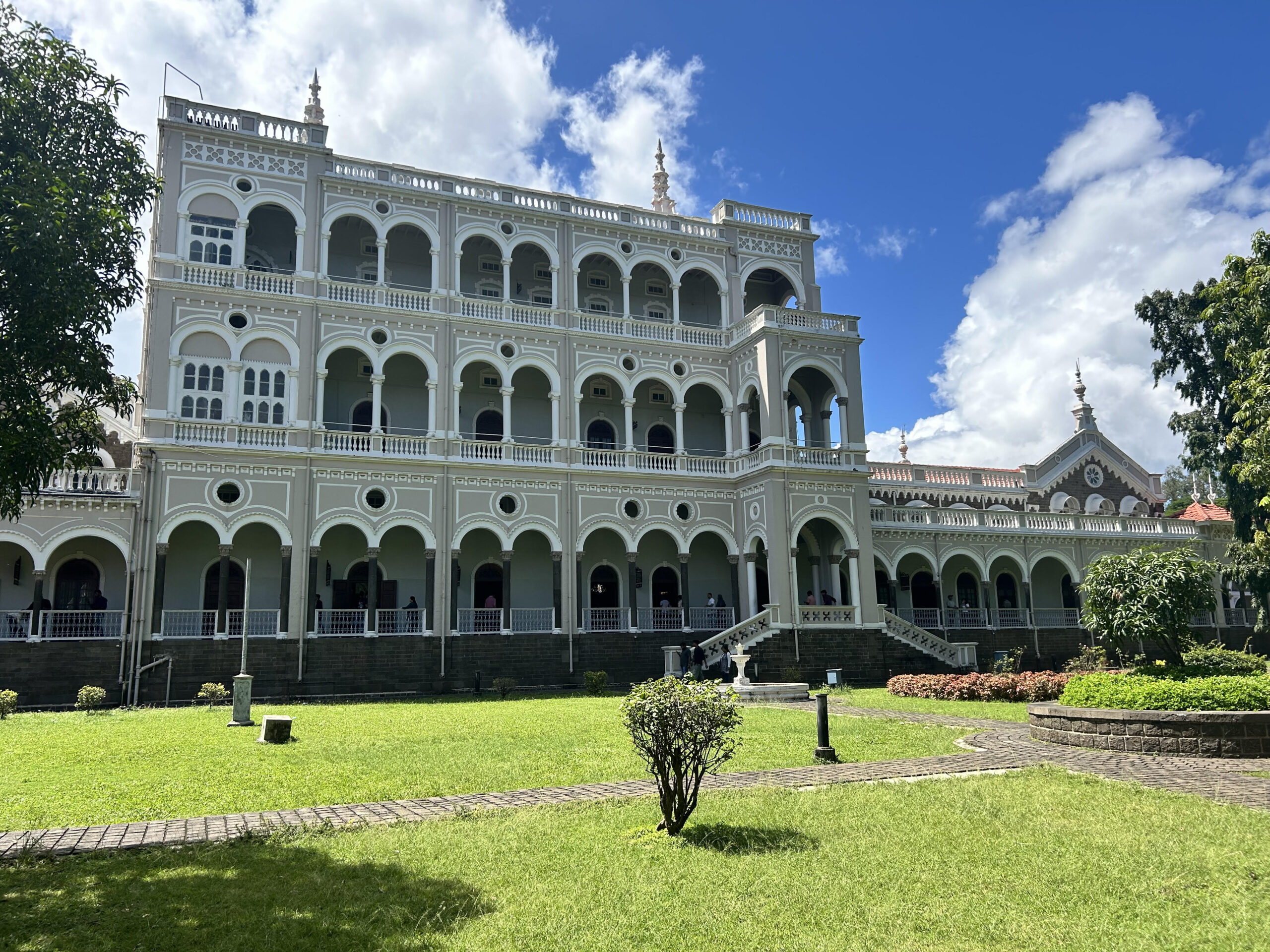
Aga Khan Palace, Pune
The Aga Khan Palace is a popular ‘must-visit’ spot for every national and international tourist visiting the bustling city of Pune in Maharashtra. The grand palace was built in 1892 by the 48th Imam or spiritual head of the Shia Ismaili Muslims, Sir Sultan Mahomed Shah Aga Khan III. According to records, the Imam commissioned the palace to provide financial assistance to the villagers facing hardships due to famine. Costing a princely sum of Rs 12 lakhs, the construction involved 1000 labourers and continued to provide employment for five years. Little did the hallowed walls of the palace know the significant role it would play in India’s Freedom Struggle.
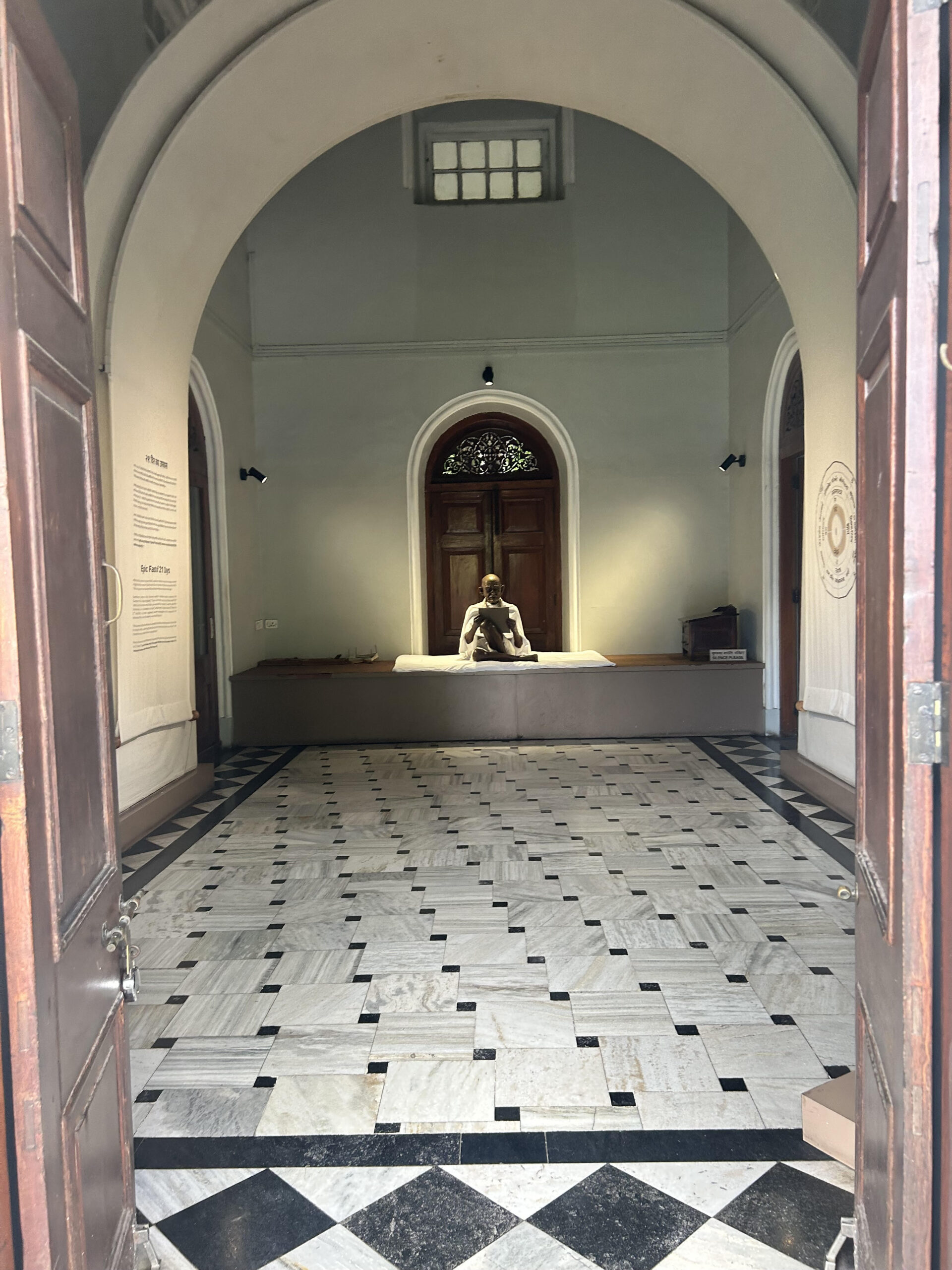
The palace was used to confine Mahatma Gandhi after the launch of the Quit India Movement on 6 August 1942. British officials arrested Gandhiji and housed him at the palace on 10 August, 1942. Other notable freedom fighters confined to the palace were Gandhiji’s wife, Kasturba Gandhi; poet and activist Sarojini Naidu; Gandhiji’s assistants, Mahadev Desai and Pyarelal Nayar; his physician Dr Sushila Nayar and his adopted daughter Mirabehn. The detainees were released two years later, on 6 May 1944, but not before the death of Kasturba Gandhi and Mahadev Desai.
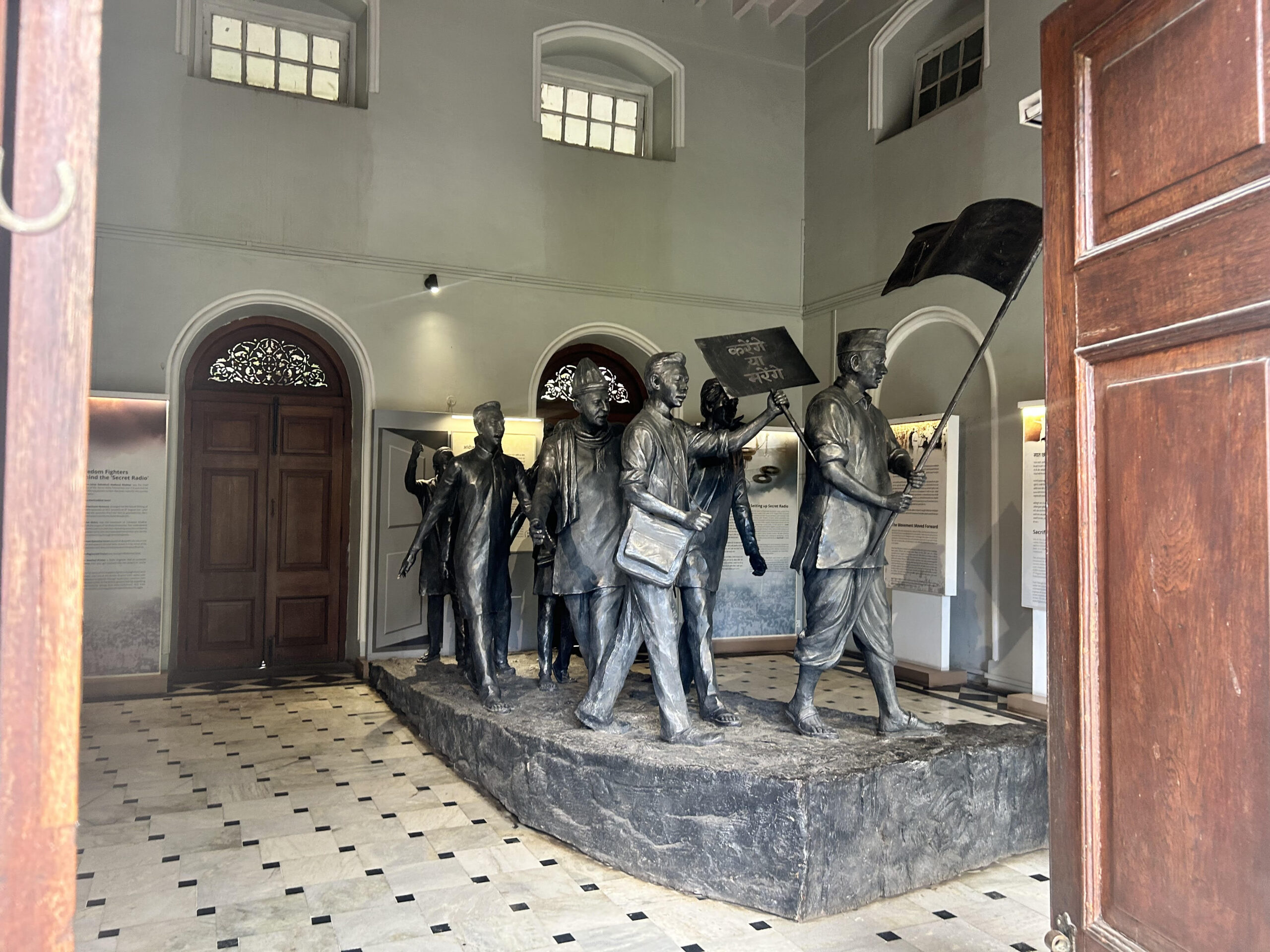
The palace’s ground floor has six galleries that transport visitors back in time. Pictures, canvases, statues and even some of Gandhiji’s personal belongings, like chappals and utensils, are on display. One gallery plays audio clips on a loop about the secret radio station set up by Gandhian Usha Mehta. The write-ups about the Quit India Movement make it amply clear that no matter how much the British regime tried to silence Gandhiji by detaining him within the palace grounds, his clarion call for ‘Quit India’ and arrest had led to huge political unrest outside the palace walls.
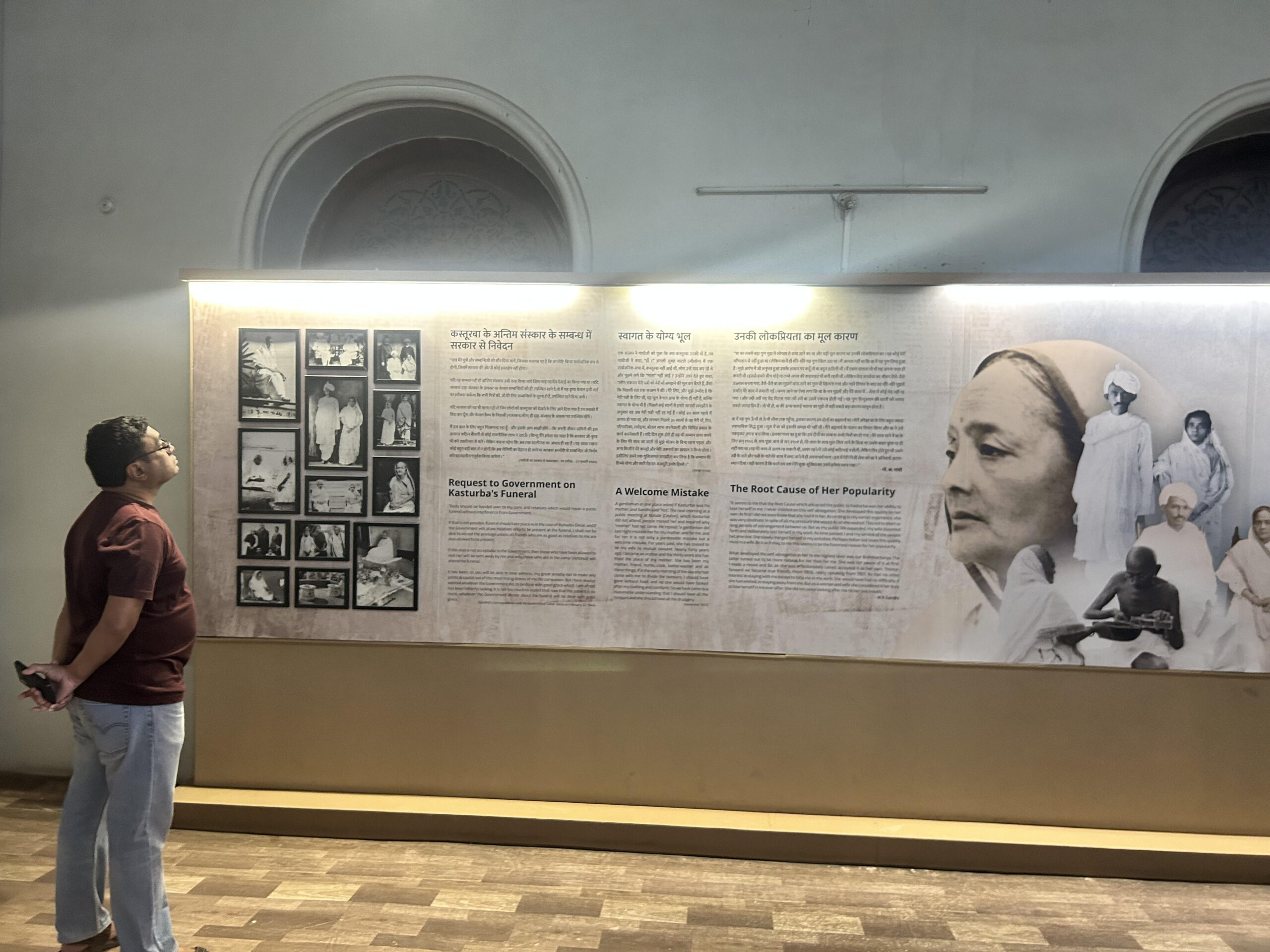
Kasturba Gandhi, fondly called ‘Ba’ passed away on 22 February, 1944 after months of illness. She remained at her husband’s side for more than sixty years before breathing her last with her head on his lap. The museum has an entire section dedicated to her. Writing about Kasturba, Dr. Sushila Nayar, physician to Gandhiji, mentions how ‘Ba’ was a keen learner and took regular studies during her detention at the Aga Khan Palace.

In February 1969, on the occasion of Gandhi’s Birth Centenary, H.H. Aga Khan IV donated the palace to the Indian government to honour Gandhian values. In 1980, the museum’s management was transferred to the Gandhi National Memorial Society, which still uses the palace as its headquarters. In 2003, the palace was declared a national monument by the Archaeological Survey of India (ASI). The ASI has since painstakingly restored several sections of the more than 125-year-old beauty that were damaged due to the passage of time.

On 15 August 1942, less than a week after his arrest and detention at the palace, Mahadev Desai, Gandhiji’s personal assistant, passed away. After Kasturba’s passing, samadhis were built on the palace grounds for Mahadev Desai and Kasturba. In 1992, the Ismaili community in Pune contributed to building a samadhi that houses Gandhiji’s ashes.

The magnificent Aga Khan Palace was built in the Indo-Saracenic architectural style, which was popular during the British Raj and incorporated European and Islamic architectural elements. The palace structure and its lawn are a huge draw for architecture and art students, who spend hours drawing the facade’s decorative arches and turrets.
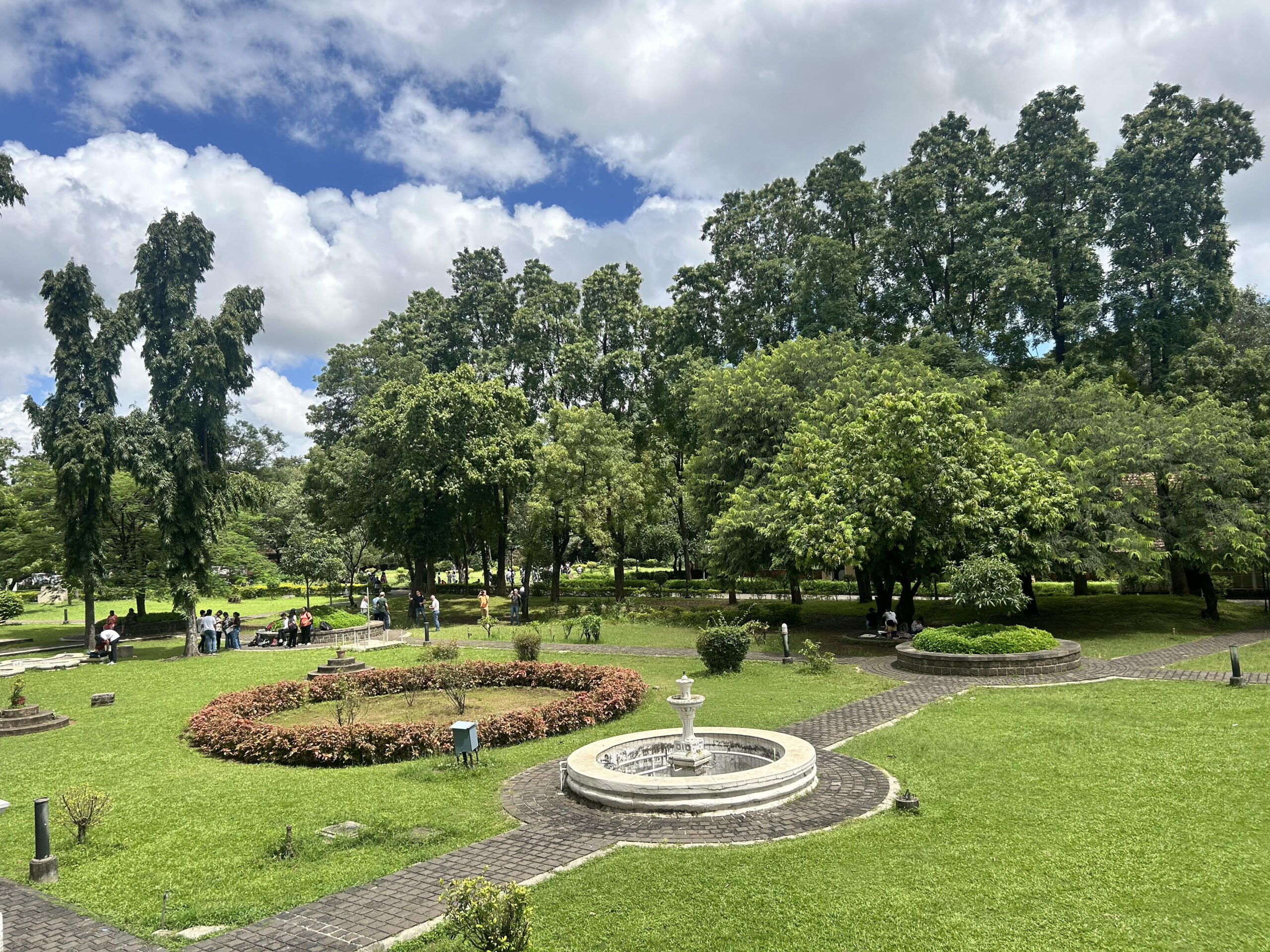
Spread over 17 acres of land, the palace’s manicured gardens are a treat to the soul. The variety of flora makes it a favoured place for nature lovers. While visiting the palace is on every school’s calendar, the Instagram-worthy pictures make it a popular spot amongst youngsters. The Aga Khan Palace receives more than 1000 visitors in a week.
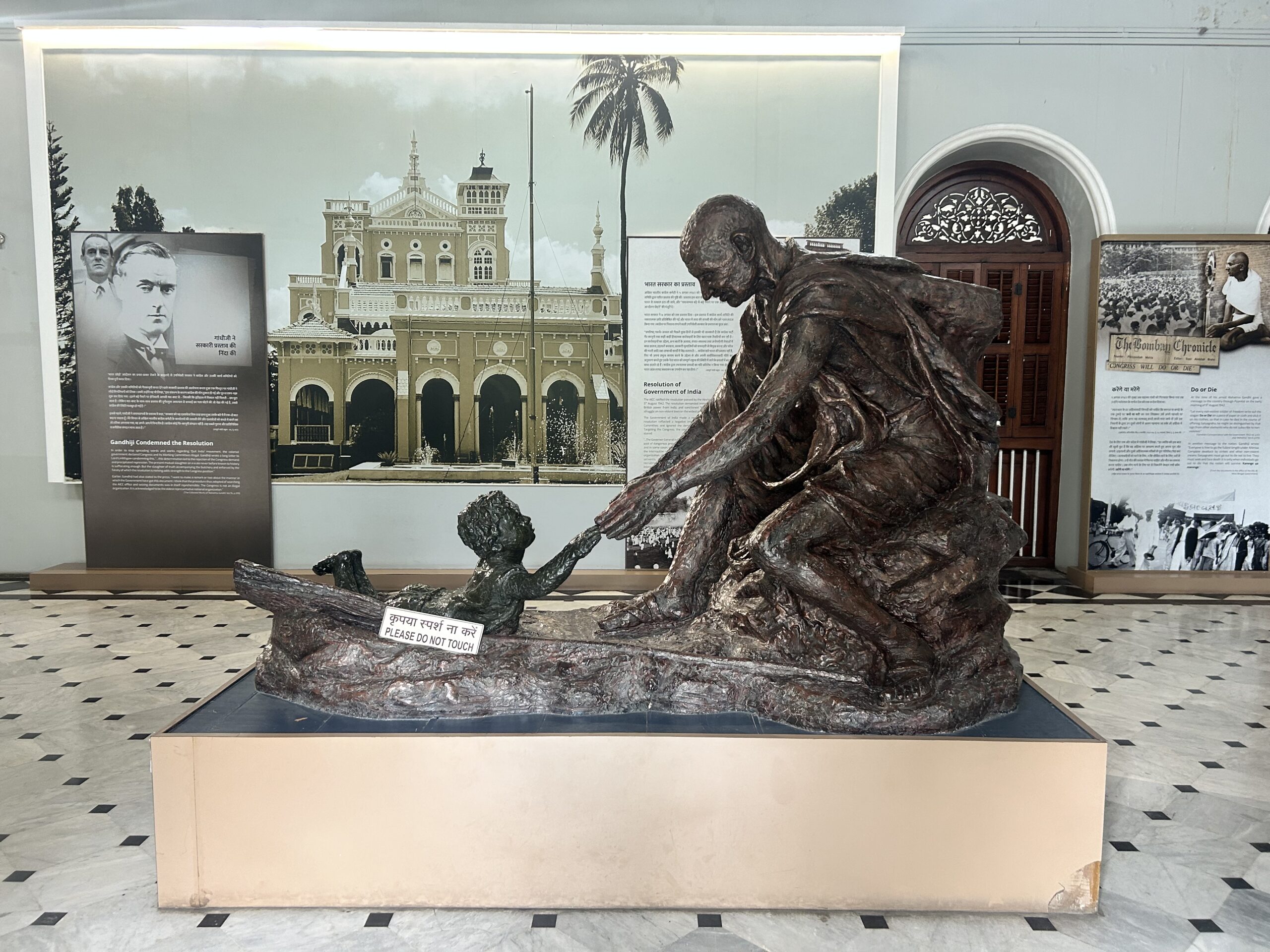
The Gandhi Memorial Society runs several skill and vocational training courses on the premises under the aegis of Kasturba Mahila Khadi Gramodyog Vidhyala. It continues to organize events and prayer meets on Republic Day (26 January), Martyr’s Day (30 January), Independence Day (15 August), Kasturba’s Death Anniversary (22 February), and Gandhiji’s Birth Anniversary (2 October).

A morning prayer meeting on 2 October 2024 saw people from all walks of life pay their respects to the Father of the Nation. Every room at the Aga Khan Palace has a story to tell. Having played a role in India’s freedom struggle, the Aga Khan Palace continues to commemorate Gandhian ideals.
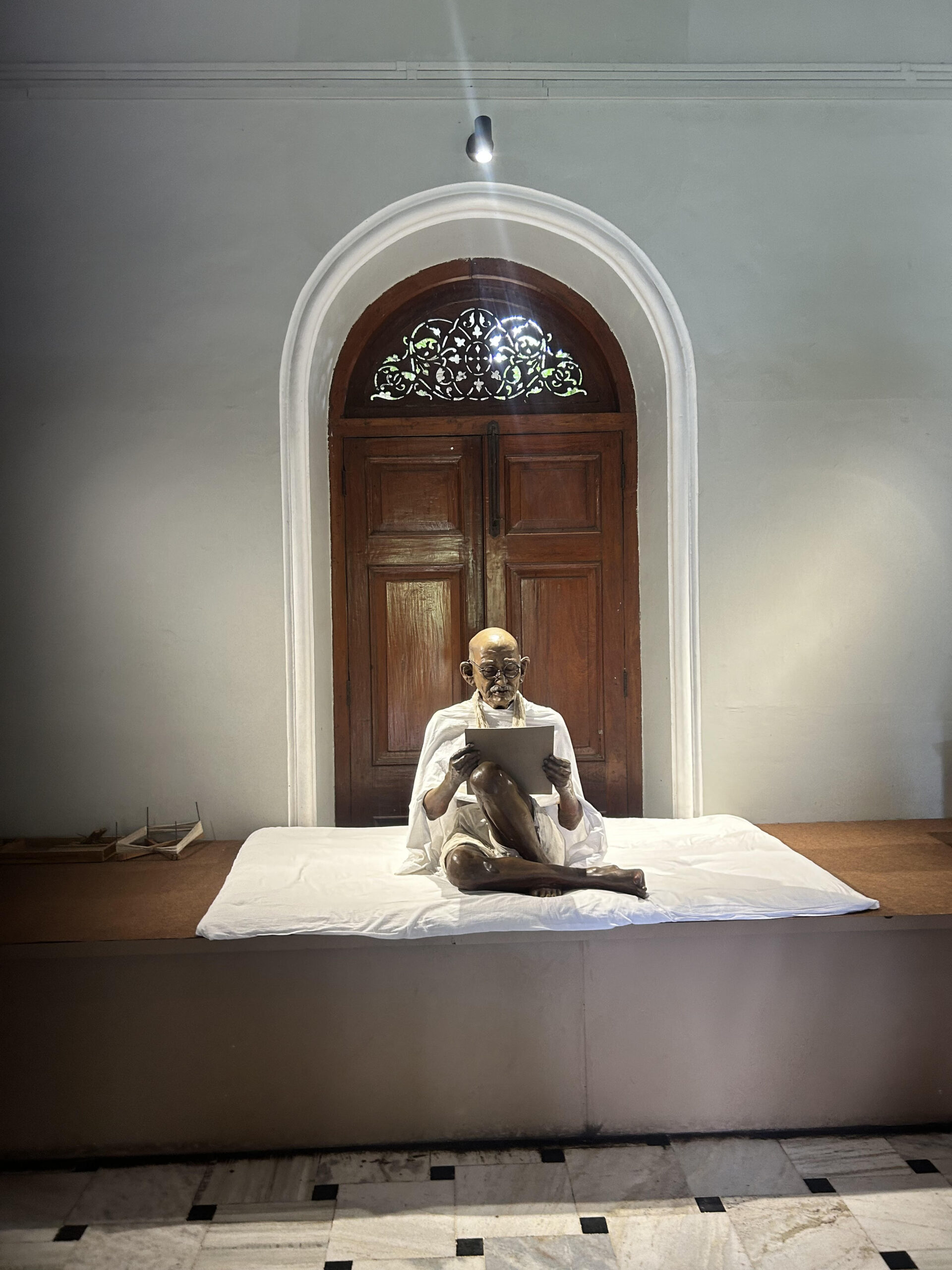
Copyeditor: Megha Mann
